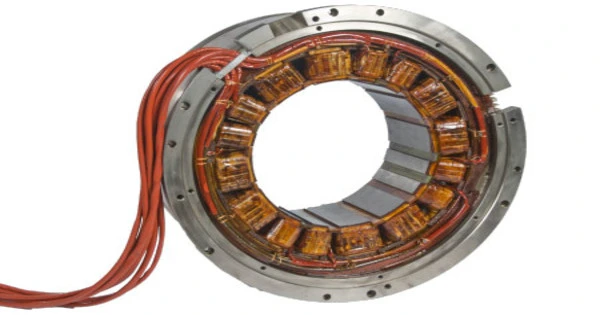A magnetic bearing is a type of bearing that uses magnetic levitation to support a load. Magnetic bearings allow moving parts to be supported without physical contact. They can, for example, levitate a rotating shaft and allow relative motion with very little friction and no mechanical wear. Magnetic bearings have the highest speeds of any bearing type and no maximum relative speed.
Magnetic bearings, as opposed to traditional mechanical bearings, use magnetic levitation to suspend the shaft, eliminating the need for physical contact and reducing friction and wear. Active bearings have several advantages: they do not wear out, have low friction, and can often automatically accommodate irregularities in mass distribution, allowing rotors to spin around their center of mass with very little vibration.
The rotor and stator are the two main components of a typical magnetic bearing system. The rotor is the system’s rotating component, usually attached to the shaft, while the stator is made up of one or more electromagnets or permanent magnets arranged around the rotor. Magnetic fields generated by these magnets interact with the rotor to provide stability and control.
Depending on the system design, the magnetic fields produced by the stator magnets repel or attract the rotor. The position and movement of the rotor can be controlled by adjusting the strength and orientation of the magnetic fields. Without physical contact, this allows for precise positioning, stability, and control of the rotating shaft.
Passive magnetic bearings use permanent magnets and thus do not require any input power; however, due to the limitations described by Earnshaw’s theorem, they are difficult to design. Techniques for working with diamagnetic materials are still in their infancy and are heavily dependent on material properties. As a result, most magnetic bearings are active magnetic bearings that use electromagnets and an active control system to keep the load stable. Permanent magnets are frequently used to carry the static load in a combined design, and an active magnetic bearing is used when the levitated object deviates from its optimum position.
Application
Magnetic bearings are commonly used in high-speed machinery, turbomachinery (such as gas turbines and compressors), flywheels, and advanced electrical machines. They’re also found in experimental and prototype systems like magnetic levitation trains (maglev) and energy storage devices.
Magnetic bearings are used in a variety of industrial applications, including power generation, petroleum refinement, machine tool operation, and natural gas handling. They are also used in Zippe-type centrifuges, uranium enrichment, and turbomolecular pumps, where oil-lubricated bearings would cause contamination.
Advantages
Magnetic bearings have a number of advantages. For starters, they reduce friction and eliminate the need for lubrication, resulting in lower maintenance requirements and increased efficiency. Magnetic bearings also offer improved control over the rotating shaft, enabling higher rotational speeds, improved stability, and vibration control. They can also operate in harsh environments where traditional bearings would fail, such as high temperatures or corrosive conditions.
















